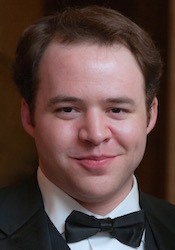Program Information
Assessment of Data-Driven Respiratory Motion-Compensation Methods for 4D-CBCT Image Registration and Reconstruction Using Clinical Datasets
MJ Riblett1*, E Weiss1 , GE Christensen2 , GD Hugo1 , (1) Virginia Commonwealth University, Richmond, VA, (2) University of Iowa, Iowa City, IA
Presentations
TH-EF-BRA-3 (Thursday, August 4, 2016) 1:00 PM - 2:50 PM Room: Ballroom A
Purpose: To evaluate the performance of a 4D-CBCT registration and reconstruction method that corrects for respiratory motion and enhances image quality under clinically relevant conditions.
Methods: Building on previous work, which tested feasibility of a motion-compensation workflow using image datasets superior to clinical acquisitions, this study assesses workflow performance under clinical conditions in terms of image quality improvement. Evaluated workflows utilized a combination of groupwise deformable image registration (DIR) and image reconstruction. Four-dimensional cone beam CT (4D-CBCT) FDK reconstructions were registered to either mean or respiratory phase reference frame images to model respiratory motion. The resulting 4D transformation was used to deform projection data during the FDK backprojection operation to create a motion-compensated reconstruction. To simulate clinically realistic conditions, superior quality projection datasets were sampled using a phase-binned striding method. Tissue interface sharpness (TIS) was defined as the slope of a sigmoid curve fit to the lung-diaphragm boundary or to the carina tissue-airway boundary when no diaphragm was discernable. Image quality improvement was assessed in 19 clinical cases by evaluating mitigation of view-aliasing artifacts, tissue interface sharpness recovery, and noise reduction.
Results: For clinical datasets, evaluated average TIS recovery relative to base 4D-CBCT reconstructions was observed to be 87% using fixed-frame registration alone; 87% using fixed-frame with motion-compensated reconstruction; 92% using mean-frame registration alone; and 90% using mean-frame with motion-compensated reconstruction. Soft tissue noise was reduced on average by 43% and 44% for the fixed-frame registration and registration with motion-compensation methods, respectively, and by 40% and 42% for the corresponding mean-frame methods. Considerable reductions in view aliasing artifacts were observed for each method.
Conclusion: Data-driven groupwise registration and motion-compensated reconstruction have the potential to improve the quality of 4D-CBCT images acquired under clinical conditions. For clinical image datasets, the addition of motion compensation after groupwise registration visibly reduced artifact impact.
Funding Support, Disclosures, and Conflict of Interest: This work was supported by the National Cancer Institute of the National Institutes of Health under Award Number R01CA166119. Hugo and Weiss hold a research agreement with Philips Healthcare and license agreement with Varian Medical Systems. Weiss receives royalties from UpToDate. Christensen receives funds from Roger Koch to support research.
Contact Email:

